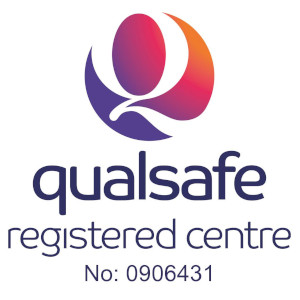Panic attacks can be sudden, overwhelming, and frightening, here, we will look at the Top Tips Managing Panic Attacks. For both the person experiencing one and those around them. They often come without warning and can be mistaken for a medical emergency, such as a heart attack.
In this blog, we’ll help you recognise the signs of a panic attack, understand what causes them, and most importantly, how to respond calmly and effectively using basic first aid knowledge. Whether you’re a workplace manager, parent, teacher, or simply someone who wants to be prepared, these skills can make a huge difference when someone is distressed.
What is a Panic Attack?
A panic attack is a sudden episode of intense fear or anxiety that triggers severe physical and emotional reactions, often without any obvious cause. They can happen to anyone and may occur in stressful situations or even out of the blue.
During a panic attack, the body goes into “fight or flight” mode, releasing stress hormones like adrenaline. This can cause overwhelming symptoms that mimic serious medical issues, which is why people often believe they’re having a heart attack or something life-threatening.
Panic attacks are not dangerous, but they are incredibly distressing. Without the right support, they can leave a person feeling frightened, exhausted, and anxious about having another attack in the future.
Common Signs and Symptoms of a Panic Attack
Panic attacks often come on quickly and can feel overwhelming. Symptoms usually peak within 10 minutes, but the after-effects can last much longer. Recognising the signs can help you respond with calm and reassurance.
Here are the most common symptoms to look out for:
Physical Symptoms:
- Rapid heartbeat or palpitations
- Chest pain or tightness
- Shortness of breath or hyperventilation
- Dizziness or light-headedness
- Sweating or chills
- Trembling or shaking
- Nausea or upset stomach
- Tingling or numbness, especially in hands or face
- Feeling hot or flushed
Emotional and Mental Symptoms:
- Intense fear or a sense of doom
- Feeling detached from reality or yourself (known as depersonalisation or derealisation)
- Fear of losing control or “going mad”
- Feeling like you’re choking or can’t breathe
- Fear of dying
It’s important to remember that not everyone experiences the same symptoms, and each panic attack can vary in intensity. For someone unfamiliar with panic attacks, these sensations can feel terrifying and confusing, which is why a calm and informed response makes such a difference.
How to Help Someone Having a Panic Attack – Top Tips Managing Panic Attacks
Knowing how to respond calmly and supportively during a panic attack can make a big difference. Your goal is to help the person feel safe, grounded, and in control, not to fix or stop the attack instantly.
1. Stay Calm and Reassuring
Your calm presence can be incredibly grounding. Speak gently and clearly. Avoid showing panic or frustration, as the person may already feel overwhelmed or frightened.
Try saying:
🗣 “You’re safe. I’m here with you. This will pass.”
🗣 “It looks like you’re having a panic attack. Let’s get through this together.”
2. Encourage Slower Breathing
Rapid breathing (hyperventilation) is common during a panic attack and can worsen symptoms like dizziness or tingling.
Support them with simple breathing:
- Breathe in for 4 seconds
- Hold for 4 seconds
- Breathe out for 4–6 seconds
- Repeat slowly
You can model the breathing yourself or count out loud for them.
3. Help Them Ground Themselves
Grounding techniques can help shift their focus away from the overwhelming sensations. Try one of these:
-
5-4-3-2-1 Technique:
Ask them to name:- 5 things they can see
- 4 things they can touch
- 3 things they can hear
- 2 things they can smell
- 1 thing they can taste or like about themselves
-
Sensory grounding:
Offer a cold drink, encourage them to hold something textured, or walk slowly around the room with them.
4. Give Them Space, But Don’t Leave
Ask what they need. Some people want quiet, others want to talk. Respect their preferences while staying nearby and available.
5. Stay With Them Until They Feel Safer
Panic attacks usually pass within 10–20 minutes. Stay until they feel more in control. Avoid rushing them or insisting they “snap out of it.”
What Not to Do During a Panic Attack
Even with the best intentions, certain responses can make a panic attack worse. Here are some things to avoid:
1. Don’t Tell Them to “Calm Down” or “Get Over It”
Panic attacks aren’t a choice, and these phrases can make the person feel judged or misunderstood. Instead, focus on being supportive and present.
2. Don’t Minimise Their Experience
Avoid saying things like:
🗣 “You’re just being dramatic.”
🗣 “There’s nothing to worry about.”
These comments can make someone feel dismissed and ashamed of how they’re feeling.
3. Don’t Crowd Them
Respect personal space. If you’re too close or overly intense, it might increase their discomfort. Stay nearby but let them guide how much interaction they want.
4. Don’t Force Physical Contact
Hugging or touching can be grounding for some — but overwhelming for others. Always ask before offering physical support:
🗣 “Would it help if I held your hand or sat next to you?”
5. Don’t Try to Problem-Solve Right Away
Panic attacks are not logical problems that need solutions in the moment. The focus should be on calming and grounding, not figuring out the cause or talking it through until later.
When to Call Emergency Services
Most panic attacks are not life-threatening, but sometimes the symptoms can closely resemble a serious medical emergency, especially if it’s the first time the person has experienced one. Always err on the side of caution.
You should call 999 or seek emergency help if:
1. The person has chest pain that doesn’t go away
Chest pain is a common panic symptom — but it can also signal a heart attack. If the pain is severe, lasts longer than a few minutes, or spreads to the arm, jaw, or back, treat it as a medical emergency.
2. They have difficulty breathing that isn’t improving
While shortness of breath is part of a panic attack, if their breathing becomes dangerously shallow or they appear to be choking, call for help immediately.
3. They lose consciousness or faint
Fainting is rare during a panic attack, but if it happens — or if the person becomes unresponsive — emergency services must be contacted.
4. You’re unsure whether it’s a panic attack or something more serious
If in doubt, always call for medical assistance. It’s better to get checked and find out it was a panic attack than to miss something serious.
Panic attacks are frightening but manageable — especially when people around you understand what’s happening and respond calmly. By recognising the signs, knowing what to do (and what not to do), and having the confidence to act, you can truly make a difference for someone in distress.
Why become trained in Mental Health First Aid? Learning Top Tips Managing Panic Attacks
Attending a mental health course will help you to realise just how
widespread the problem can be for individuals who are affected by poor mental health, as well as create a new perspective on all of the ways it can affect their lives. Knowing more about poor mental will not only reduce stigma but get people talking without judgement. Talking more reduces the signs and symptoms but reduces the chances of mental health becoming a diagnosable mental health illness.
We have courses online delivered via zoom, or in our classroom at Brownhills. If you have a group of staff need training to become Mental Health First Aiders we can come to your classroom on site.
To view our open courses please click here; Mental Health First Aid
Contact us
Call us on 01543 453338 or email at info@hmbtrainingservices.co.uk




